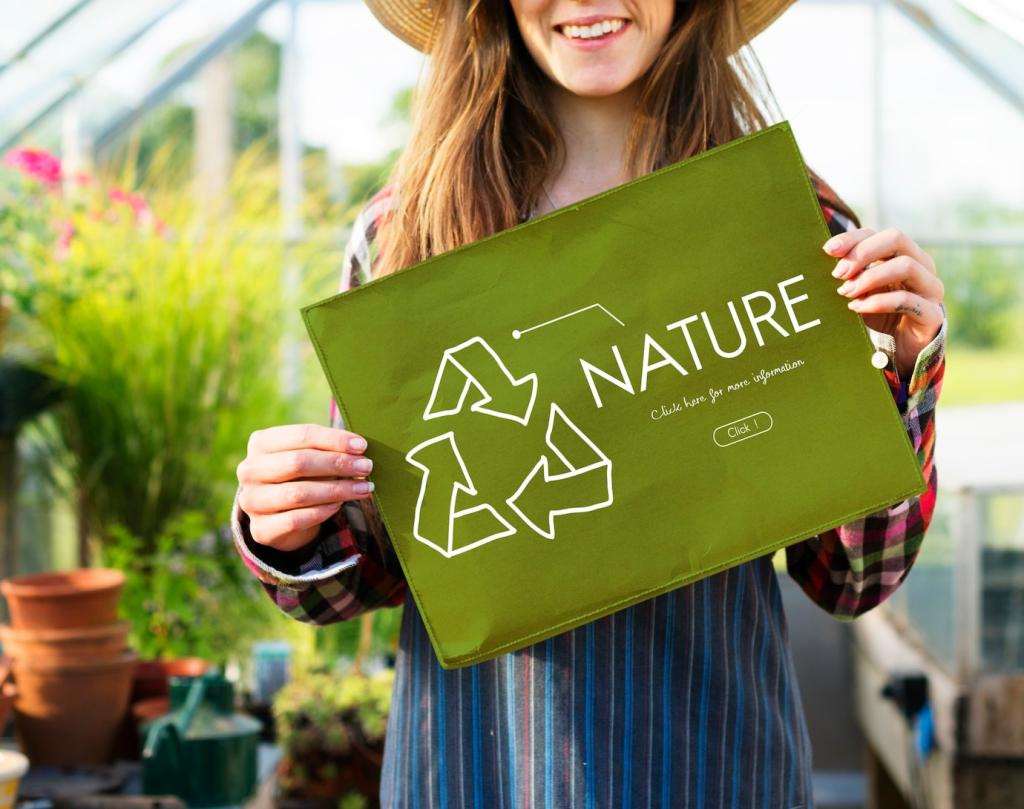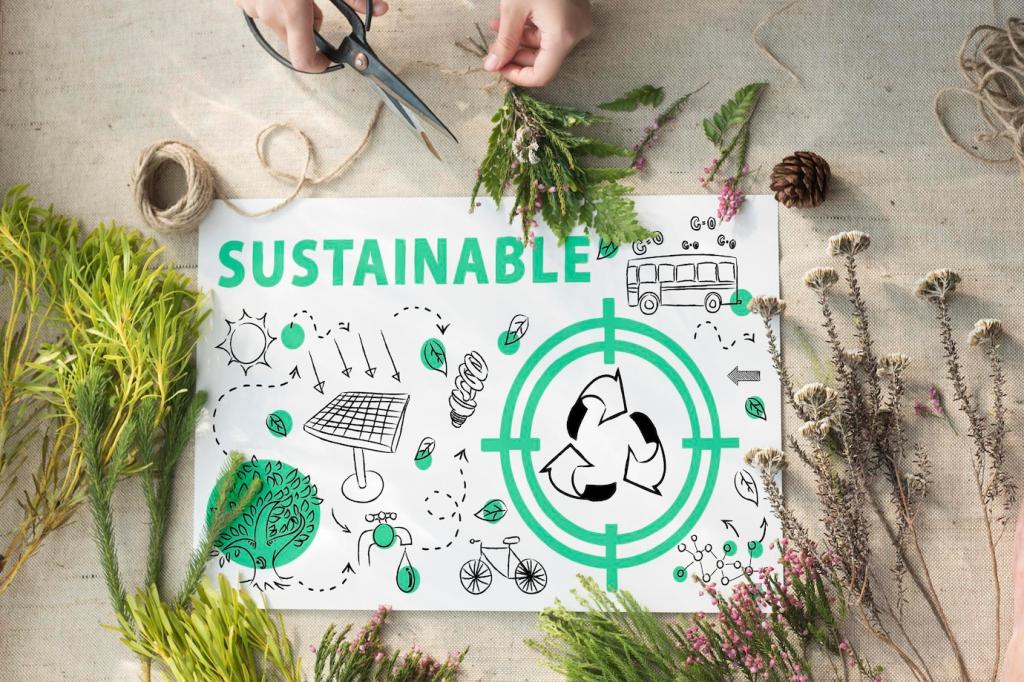
Chosen Theme: Green Marketing Strategies: A Copywriter's Guide
Welcome! Today we dive into Green Marketing Strategies from a copywriter’s perspective—practical, ethical, and inspiring ways to communicate sustainability. Explore authentic messaging, credible proof, and engaging stories that turn eco-intent into real action. Subscribe and share your questions to shape future guides.
Proof Over Promises: Establish Authentic Credibility

Certifications That Matter
Identify labels relevant to your category and explain what they actually mean. Clarify scope, renewal cycles, and who audits compliance. Invite readers to comment with labels they trust, and turn that feedback into a living glossary of credible standards.

Measurable Claims and Methodology
Pair quantitative claims with plain-language methods. If you mention emissions, note boundaries, baselines, and time frames. Make sources easy to access. Add a simple explainer so everyday shoppers can understand the “why” behind the numbers without specialized knowledge.

Case Stories with Transparent Limits
Share real examples and admit imperfections. A small apparel brand reduced dye water by switching processes, but still works on shipping emissions. That honesty builds trust. Ask readers which trade-offs they accept and why, fostering open, respectful dialogue around progress.
Storytelling for Impact, Not Guilt
Follow your product from design to reuse, highlighting people who made thoughtful choices. A copywriter once profiled a packaging engineer who redesigned a cap, cutting plastic and frustration. Readers loved the human ingenuity, not just the statistic, and shared the story widely.


Storytelling for Impact, Not Guilt
Show how choices support livelihoods and safety, not just environmental metrics. Highlight fair conditions and local benefits without romanticizing. Invite readers to ask about social impact alongside environmental data, strengthening a holistic definition of sustainability in every conversation.
SEO Aligned to Sustainable Intent
Research keywords that reflect real questions: repairs, refills, materials, and product care. Create guidance that solves problems first and sells second. Use structured headings and glossary pages to help readers—and search engines—understand your sustainability approach without confusion or fluff.
Social Micro-Stories and UGC
On social, share quick, visual proof: behind-the-scenes sourcing, packaging tests, or refill routines. Invite user-generated stories that highlight everyday impact. Moderate claims, keep captions clear, and thank contributors publicly to reinforce collaboration and community trust over polished perfection.
Lifecycle Email that Educates
Use onboarding emails to teach care, reuse, and end-of-life options. Trigger messages after milestones, like a product’s refill date, to nudge sustainable habits. Ask subscribers which topics they want next, then adapt content so learning feels personalized and genuinely helpful.


Convert with Integrity: Ethical Persuasion
Tie CTAs to outcomes people care about: waste avoided, durability, or community projects supported. Use concise, honest language and avoid urgency that feels manipulative. Invite readers to subscribe for impact updates, keeping momentum grounded in progress rather than hype.
Convert with Integrity: Ethical Persuasion
Answer questions before they arise: materials, sourcing, care, and end-of-life pathways. Clarity reduces hesitation and boosts confidence. Encourage readers to reply with unclear points, then update copy publicly so everyone benefits from shared learning and constructive feedback.
Avoid Greenwashing: Language, Limits, and Law

Replace vague words like eco-friendly with specifics: recycled content percentages, energy sources, or end-of-life pathways. Name what a claim covers and what it does not. Invite readers to challenge unclear phrases, and commit to rapid, transparent clarifications when needed.

Engagement Signals with Purpose
Watch time-on-page for educational explainers, saves and shares on how-to content, and replies to impact updates. These signals reveal what helps people act. Ask readers which formats they prefer and test variations that make learning simpler and more enjoyable.

Customer Feedback as Compass
Turn comments and support tickets into an editorial backlog. If readers ask about repair parts, write an illustrated guide. If they question materials, publish a sourcing explainer. Thank contributors by name in newsletters to build trust and shared ownership.

Pair Messaging with Impact Progress
Connect communication improvements to tangible outcomes, like higher reuse or returns for repair instead of discard. Show progress over time and explain next steps. Invite subscribers to vote on upcoming initiatives, creating a transparent roadmap you commit to revisiting together.
